Search Results for Tag: Mount Everest
UIAA supports stricter rules on Everest
Backing for the Nepalese authorities: The International Climbing and Mountaineering Federation (UIAA) “fully supports the decision to propose more stringent measures for climbers wishing to scale the world’s highest peak, Mount Everest (29,029ft / 8,848m)”, as it said. These measures will include individuals having to prove they have already scaled a peak higher than 6,500 meters, thus eliminating the possibility of novice climbers scaling the mountain. “Everest should become a mountaineers’ mountain again”, said UIAA president Frits Vrijlandt.
![]() read more
read more
Habeler: “Go to Nepal – but not all to Everest!”
You would not estimate that Peter Habeler has really 73 years under his belt. Slim, wiry, tanned – just one who is still climbing mountains. Along with friends, he is currently repeating many routes in the Alps that he climbed when he was young, the Austrian told me when I met him at a mountaineers’ event in Leverkusen near my hometown Cologne last weekend: “Thankfully, I feel physically very well. But it’s going round in circles: If you train and climb a lot, you’re just in better physical shape.” Even 37 years after Habeler climbed Mount Everest along with Reinhold Messner for the first time without bottled oxygen, the highest mountain on earth is always in his mind – of course also due to the fact that he as a pioneer is questioned on Everest again and again.
![]() read more
read more
Kuriki’s second summit push on Everest failed
The Japanese climber Nobukazu Kuriki has turned around again. The 33-year old abandoned his second summit attempt at 8,150 meters, about 200 meters above the South Col. „Deep snow and high winds“ stopped him, Kuriki tweeted. “I did my best. I’m really disappointed.” Indeed he sounded exhausted and frustrated talking via radio with his team.
![]() read more
read more
The real blind on Everest are the inexperienced
The Nepalese government has triggered a medial avalanche. A week ago, Tourism Minister Kripasur Sherpa mentioned the possibility of stricter rules on granting permits for Mount Everest. The government is considering age limits – from 18 to 75 years – and a reduction of permits for disabled climbers. “The disabled or visually impaired people usually need someone to carry them, which is not an adventure”, Sherpa said. “Only those who can go on their own will be given permission.” The American Erik Weihenmayer, in 2001 the first blind person ever to climb Mount Everest, is outraged. The statement is an overreaction that represents the biases, prejudices and superstition that are very prevalent in Nepal government, Erik writes on Facebook: “It’s a shame that the Minister of Tourism is using the tragedies of the last two years to scapegoat the tiny number of disabled climbers and enact a policy that won’t fix the problem. Frankly, being faced with additional challenges, disability, age, etc. forces a climber to be more prepared and make more cautious decisions.”
![]() read more
read more
Kuriki: “I’ll enjoy climbing including hardship”
Next try. In these days, Japanese climber Nobukazu Kuriki will start his second summit attempt on Mount Everest. As reported before, his first try had failed last weekend, at about 7,700 meters, the level of the Geneva Spur, 200 meters below the South Col. Kuriki is the only climber who tries to scale Everest this fall, climbing alone without bottled oxygen. I have succeeded in contacting the 33-year-old at Everest Base Camp.
Nobukazu, what went wrong during your first summit attempt?
There was deeper snow than I expected, and it took too long to plow through it.
You decided to pitch your tent for your highest camp at about 7,700 meters instead of the usual South Col. Why?
![]() read more
read more
Stricter rules for Everest permits?
The Nepalese government apparently wants to make sure that Mount Everest is taken seriously again. Speaking at an event in Kathmandu on the occasion of the World Tourism Day on Sunday, Tourism Minister Kripasur Sherpa said that new age limits and other more stringent conditions on granting permits for Everest expeditions were in preparation. It is considered to allow only climbers aged between 18 and 75 to climb the highest mountain on earth.
![]() read more
read more
Kuriki turns around on Everest
It would have been a real bang. And probably the headline was already prepared: “Historical Everest climb with only one complete finger”. But this headline will be put away in a drawer until further notice. Nobukazu Kuriki has abandoned his first summit attempt on Everest. “I tried hard taking all my energy, but it took too much time to move in the deep snow”, the 33-year-old Japanese tweeted. “I realised if I kept going, I wouldn’t be able to come back alive.” It is still unclear how high exactly he climbed. According to his GPS signal messenger, he did not reach the South Col. Kuriki had made his “last Camp”, as he wrote, at about 7,700 meters, at about the level of the Geneva Spur, 200 meters below the South Col. From there, it would have been a real marathon stage up to the 8,850-meter-high summit – in particular because the Japanese was climbing solo above Camp 2, not using bottled oxygen, and the route was neither prepared nor secured with fixed ropes.
![]() read more
read more
40 years ago: Everest Southwest Face first climbed
“Everything was said 40 years ago. Nothing has changed.” Doug Scott was tight-lipped when I asked him last spring about the British Everest Southwest Face Expedition in 1975. Late on 24 September, today exactly 40 years ago, Doug and his team comrade Dougal Haston, had reached the summit of Mount Everest after they had first climbed the more than 2000-meter-high, extremely difficult rock wall. After their summit success Scott and Haston survived a bivouac at 8760 meters. Their first climb of the Southwest Face was a milestone in Himalayan climbing, one of the “last big problems” was solved. Five expeditions had failed before, among them a British one in 1972.
![]() read more
read more
Dawa Steven Sherpa: “Ke garne! We carry on!”
There is a jinx on it. Two spring seasons on Everest in a row remained without summit successes (I ignore those of the Wang Jing team in 2014 because they were flown by helicopter to the high camp). In 2014, all commercial expeditions were cancelled after an avalanche had killed 16 Nepalese climbers in Khumbu Icefall. This year, the devastating earthquake in Nepal triggered an avalanche from the seven-thousander Pumori hitting Everest Base Camp and killing 19 mountaineers and support staff. Once again the spring season ended before it had really begun. What does this mean for the Sherpa people?
I called Dawa Steven Sherpa. Along with his father Ang Tshering Sherpa, the president of the Nepal Mountaineering Association (NMA), the 31-year-old is managing “Asian Trekking”, a Kathmandu-based leading operator for expeditions and trekkings in the Himalayas. Dawa Steven scaled Everest twice (in 2007 and 2008) and in addition the eight-thousanders Cho Oyu (2006) and Lhotse (2009). Under his expedition leadership more than 150 climbers have summited Everest. But Dawa Steven is also a tireless fighter for environmental and climate protection in the Himalayas. Furthermore he is leading “Resilient Homes” , a project of the “Himalayan Climate Initiative” to help earthquake-affected communities to rebuild their houses and other buildings – one more reason to talk to him about the current situation in Nepal.
![]() read more
read more
Viewed: “Everest”
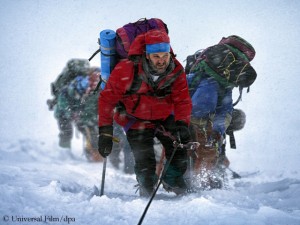 The movie “Everest” works if you consume it as if you were to take a shower outside on a hot summer day: Just let the water flow, don’t think too much! Then you’ll really enjoy the 3-D dolly shots which were filmed in Nepal: for instance from above down to the suspension bridge that crosses the river Dudh Kosi in dizzy heights near Namche Bazar or the view of the Western Cwm, the “Valley of Silence”, above the Khumbu Icefall. In this case you’ll likely find the movie’s story about the disaster on Everest in 1996, when eight climbers were killed in a storm in the summit area, exciting. And you’ll probably stand up from your cinema seat after two hours with the feeling of having been well entertained and seen a cinematic well-made mountain action drama. It only becomes problematic if you take the note at the beginning of the film seriously: “Based on a true story”.
The movie “Everest” works if you consume it as if you were to take a shower outside on a hot summer day: Just let the water flow, don’t think too much! Then you’ll really enjoy the 3-D dolly shots which were filmed in Nepal: for instance from above down to the suspension bridge that crosses the river Dudh Kosi in dizzy heights near Namche Bazar or the view of the Western Cwm, the “Valley of Silence”, above the Khumbu Icefall. In this case you’ll likely find the movie’s story about the disaster on Everest in 1996, when eight climbers were killed in a storm in the summit area, exciting. And you’ll probably stand up from your cinema seat after two hours with the feeling of having been well entertained and seen a cinematic well-made mountain action drama. It only becomes problematic if you take the note at the beginning of the film seriously: “Based on a true story”.
![]() read more
read more
Steck: “The only way I can help the people of Nepal”
There are only 20 days left until Ueli Steck will return to Nepal. To the country where the 38-year-old Swiss top climber in the same year celebrated his probably most spectacular success as an extreme climber as well as the greatest fear of death that had nothing to do with mountain dangers. In spring 2013, a group of angry Sherpas attacked Ueli and his teammates Simone Moro and Jonathan Griffith in Everest high camp and threatened them with death. In fall 2013, Steck reached the 8091-meter-high summit of Annapurna, the eight-thousander with the highest fatality rate: solo, via the extremely dangerous South Face, on a partly new route, as always without bottled oxygen. It took Ueli only 28 hours to climb up and down.
This summer, he proved once again that he is able to climb mountains lickety-split, when he – as reported in my blog – scaled all 82 four-thousanders of the Alps within 62 days and overcame the distance between the mountains without engine power: by hiking, cycling or paragliding. I talked to Ueli about his tour de force through the Alps – and also about his upcoming exciting project in Nepal: on Nuptse, within sight of Mount Everest.
![]() read more
read more
PR with a permit
The despair in Nepal must be great. There is no other explanation for the fact that the government in Kathmandu called a press conference these days only to hand out a permit for an expedition. Japanese climber Nobukazu Kuriki received the written permission to climb Mount Everest this fall from the hands of Tourism Minister Kripasur Sherpa. “Kuriki is climbing at a time when there is confusion in the world about the safety in Nepal after the earthquake”, the Minister said. “This will be an example for other visitors to come to Nepal which is safe for mountain climbing.” The 33-year-old Japanese climber sang the same tune: “The main purpose of my climb is to spread the message that Nepal is safe for climbers and trekkers even after the earthquake.”
Kuriki – as reported – wants to climb Everest from the Nepal side, after the Chinese authorities gave all expeditions to Tibet the cold shoulder. Today Kuriki flew from Kathmandu to the Khumbu region for acclimatization. In 2012, in his last attempt to climb Everest in fall, the Japanese had suffered severe frostbite. Nine fingers had to be amputated. Like then, Kuriki again plans to climb solo and without bottled oxygen, this time on the normal route. The “Icefall Doctors” will prepare for him the route through the Khumbu Icefall.
![]() read more
read more
With nine finger stumps to the top of Everest?
It has gone out of style to climb Mount Everest in fall. This happened even though some of the most spectacular summit successes on the highest mountain in the world have been made in the post-monsoon period: Remember only the first ascent through the Everest Southwest Face by the British Doug Scott and Dougal Haston in September 1975 or the success of the US-American Carlos Buhler, Kim Momb and Lou Reichardt via the East Face in October 1983. However, the climbing season has moved more and more into spring since commercial expeditions have taken over on Everest – due to higher temperatures compared to fall and to the usually lower risk of avalanches. Since 2000, only 36 summit successes have been recorded in September or October – next to nothing compared with over 5,000 ascents in spring since the turn of the millennium. The last ascent to the top of Everest in fall dates from five years ago: In October 2010, the American Eric Larsen and five Sherpas reached the highest point at 8,850 meters. This fall, there will be another attempt to climb Everest from the Nepalese south side. According to the “Himalayan Times” the so-called “Icefall Doctors” – a group of high specialized Sherpas – arrived at Base Camp in order to fix a route through the Khumbu Icefall.
![]() read more
read more
Children on Everest? Irresponsible!
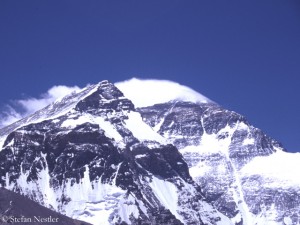 A twelve-year-old boy on top of Everest? Professor Thomas Kuepper can only shake his head. The occupational health and sport physician at the University Hospital Aachen is an internationally recognized authority on high altitude medicine who is also advising the International Climbing and Mountaineering Federation (UIAA). I had asked him what he thinks about the American Tyler, aged eleven today, who – as reported in my blog – wants to climb Mount Everest next spring. “You should file a charge of child abuse”, Kuepper wrote back disgustedly.
A twelve-year-old boy on top of Everest? Professor Thomas Kuepper can only shake his head. The occupational health and sport physician at the University Hospital Aachen is an internationally recognized authority on high altitude medicine who is also advising the International Climbing and Mountaineering Federation (UIAA). I had asked him what he thinks about the American Tyler, aged eleven today, who – as reported in my blog – wants to climb Mount Everest next spring. “You should file a charge of child abuse”, Kuepper wrote back disgustedly.
![]() read more
read more
Too young for danger of death
Tyler Armstrong wants to break the record. Or do his parents want him to do it? Or all three? Anyway, the family of the eleven-year-old (!) US-American has announced that Tyler will try to scale Mount Everest in spring 2016. Crazy! Then Tyler would be twelve years and four months old – thus one and a half years younger than his compatriot Jordan Romero, who climbed Everest in 2010 from the Tibetan north side and who since that time is registered in the record lists as the youngest climber ever on the highest mountain on earth.
![]() read more
read more



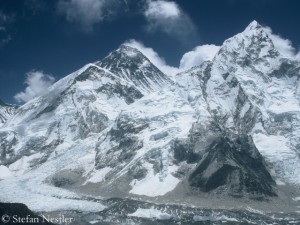

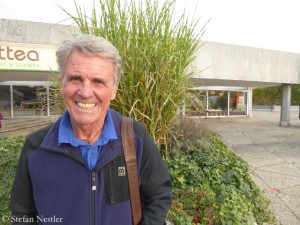
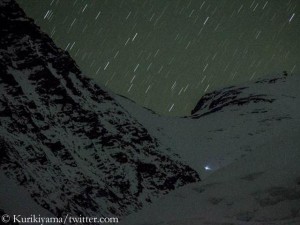
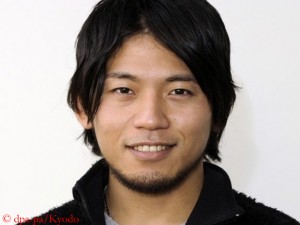
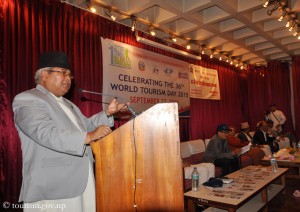
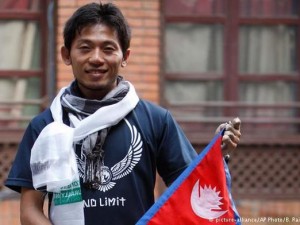
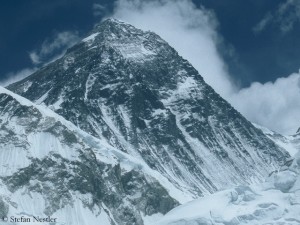

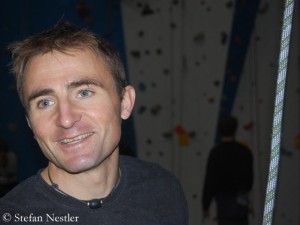
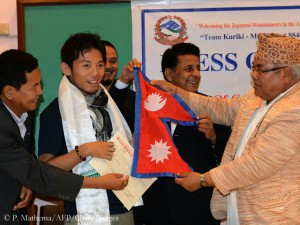
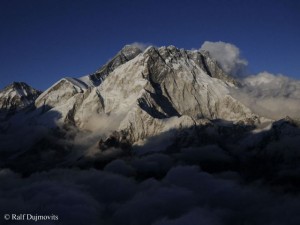
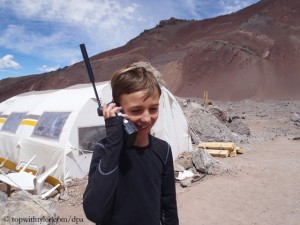





Feedback